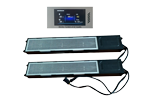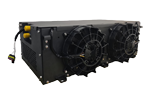The working principle of air conditioning refrigeration for pure electric vehicles involves four core processes that ensure a comfortable temperature inside the vehicle.
The first is the compression process: in this stage, the compressor of the air conditioning system is responsible for inhaling the low temperature and low pressure refrigerant gas from the evaporator outlet. Through the operation of the compressor, these gases are compressed into a high temperature and high pressure state to prepare for the subsequent heat dissipation process.
Next comes the heat dissipation process: high temperature, high pressure refrigerant gas enters the condenser. In the condenser, the pressure and temperature of the gas gradually decrease, causing it to condense from a gaseous state to a liquid state. This process will release a lot of heat, ensuring the effective discharge of heat inside the car.
This is followed by a throttling process: the refrigerant liquid after passing through the condenser enters the expansion device. Here, the volume of the liquid suddenly increases, causing its pressure and temperature to drop sharply. Eventually, the refrigerant leaves the expansion unit as a mist (tiny droplets) and enters the next cycle.
Through the above refrigeration cycle, the air conditioning of pure electric vehicles continuously drains the heat from the car to ensure a cool and comfortable interior environment for passengers.









.png)






